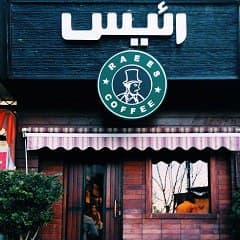First off, this is not a comprehensive perspective on Iran today. It’s is based on relatively fleeting visits when I get to see the best of the country, evaluating its World Craft Cities. I can’t deny any of the negative news that comes out of Iran, but I can testify to some positive developments that have not been as widely disseminated. It’s all too easy in the West to cast off an Eastern country as primitive and dysfunctional. We inherit a colonial mindset that has worked over centuries to justify the appropriation of land and resources from the rest of the world.
Since the reports on the imprisonment of Australian visitors, my mother had asked me not to travel to Iran. The DFAT travel advisory said, “Reconsider your need to travel”. Indeed, in an age of climate change, I’m always reconsidering whether a plane trip justifies the carbon. But having travelled through Iran a number of times and being so infected with kindness and pride, I felt deep solidarity with their situation. Just as Iranian politics was beginning to relax, the US broke its deal and imposed new financial sanctions. We can toss this aside as Trump whim, but nevertheless, the world follows this lead and further isolates the country. Only negative news gets out.
Why should our relations with a nation be determined by the narrow self-interest of a leader from another country? We should at least keep our eyes open to what is happening there, rather than blindly follow their lead.

Instagram comes to Iran
My previous visits to Iran introduced me to the messaging app Telegram, which at that time was openly accessible. I found it more flexible than others and wished it was more widely used in the West. Since then it has been blocked and most Iranians tend to use WhatsApp. Meanwhile, Instagram has become widely popular. It’s not just about selfies. Most businesses advertise their Instagram handle and people are keen to swap account details on meeting me. This has great promise for connections outside Iran, which Garland is hoping to foster with East West Meet, where individual inside Iran paired with those outside whose accounts they can follow.
Where did Donald Trump go?
I might have missed some in my travels, but the caricatures of Donald Trump that lined the streets a couple of years ago seem to have disappeared. Maybe there is no longer hope of any political change on the global scale. Or maybe people were simply tired of a predictable message. Whatever, live goes on.
The rise of culture

Like many non-Western countries, Iran is championing its unique cultural heritage. This seems to have intensified since my previous visit. I was very impressed with the work of the Iran Cultural Heritage and Tourism Organisation, that had revitalised many crafts through their National Craft City program. This work has been rewarded by now giving cultural heritage its own ministry, a stark contrast to Australia which has recently removed the word “arts” from its departmental titles.

I was lucky to be in Iran during Yalda, which is the celebration of the winter solstice, where people spend all night reading poetry from Hafez and consuming all things red, such as pomegranates. It’s an ancient festival that has roots in the Zoroastrian culture. I was reminded of the Jewish festivals that have evolved to successfully bind a culture over millennia, particularly in hardship.

The next day, I suddenly noted the complete absence of Western shops from the streets. There were certainly no fast-food chains or designer brands. The little discretionary income they have is not being gathered up by US corporations like Netflix or Amazon. They have developed their own versions of these, like the … coffee shop and the ride-sharing Tappsi app.
I was worried that the sanctions might affect their access to medical supplies, but I was told that most of these are now sourced from India, where they are cheaper anyway.

I would like to think that the US betrayal of the nuclear contract might actually have been beneficial for Iran. It has grown in self-reliance and also renewed a focus on its own culture, just as the ban on Huawei has led to the development of Chinese-made components. The economic bullying by the US may indeed back-fire as countries become determine to become independent of such a fickle friend.
This was my first visit to Iran since having travelled to Uzbekistan, which shares many cultural traits with Iran but was administered under the Soviet system. This comparison highlighted the dour nature of Iran, where dancing in public is forbidden and women are not allowed to sing. While it was just as patriarchal at the top, Uzbekistan had a much freer exchange between its people.
I did come across a young girl wrestler in Iran and was told this was a growing trend. So perhaps a new generation will be able to change this.
Iran remains close to my heart. It has its meticulous crafts, unprecedented generosity and vibrant traditions built on layers of mysterious history. Its culture will outlast any economic blockade.

One reply on “Iran since the sanctions: In some ways better”
Thank you Kevin for contributing to some balance in reportage of aspects of countries that habitually get bad press. The bad press is usually lazy and knee jerk in nature.